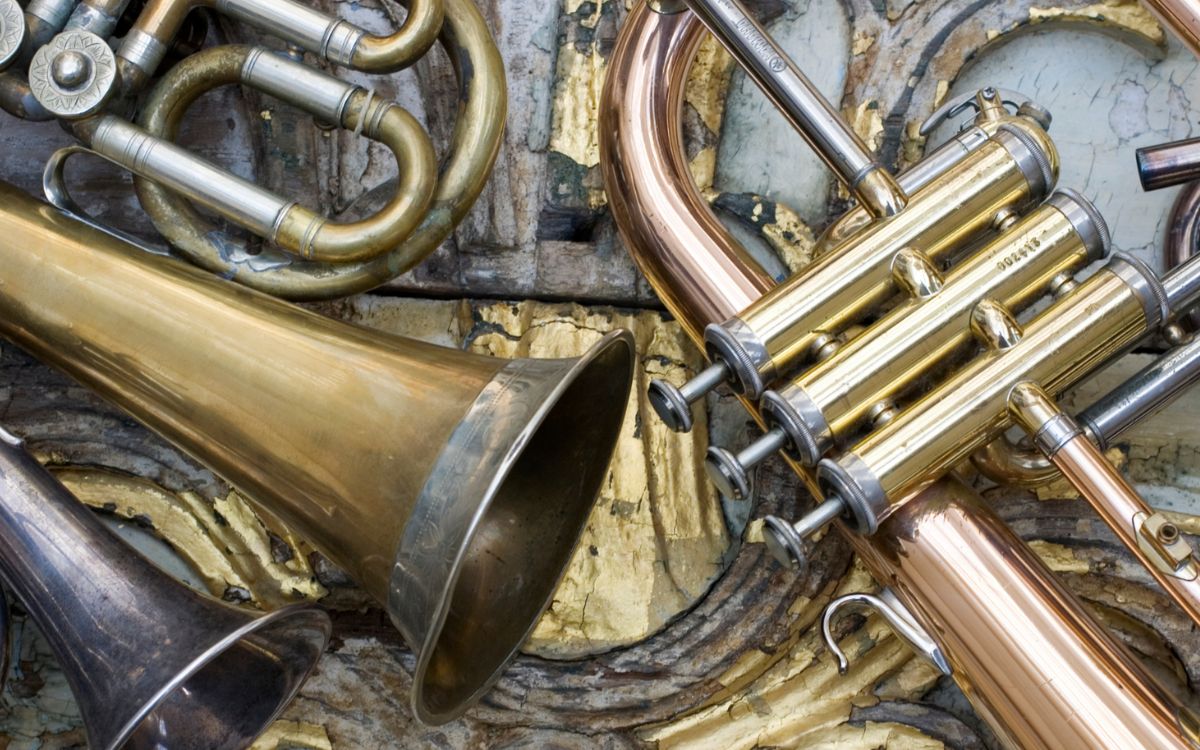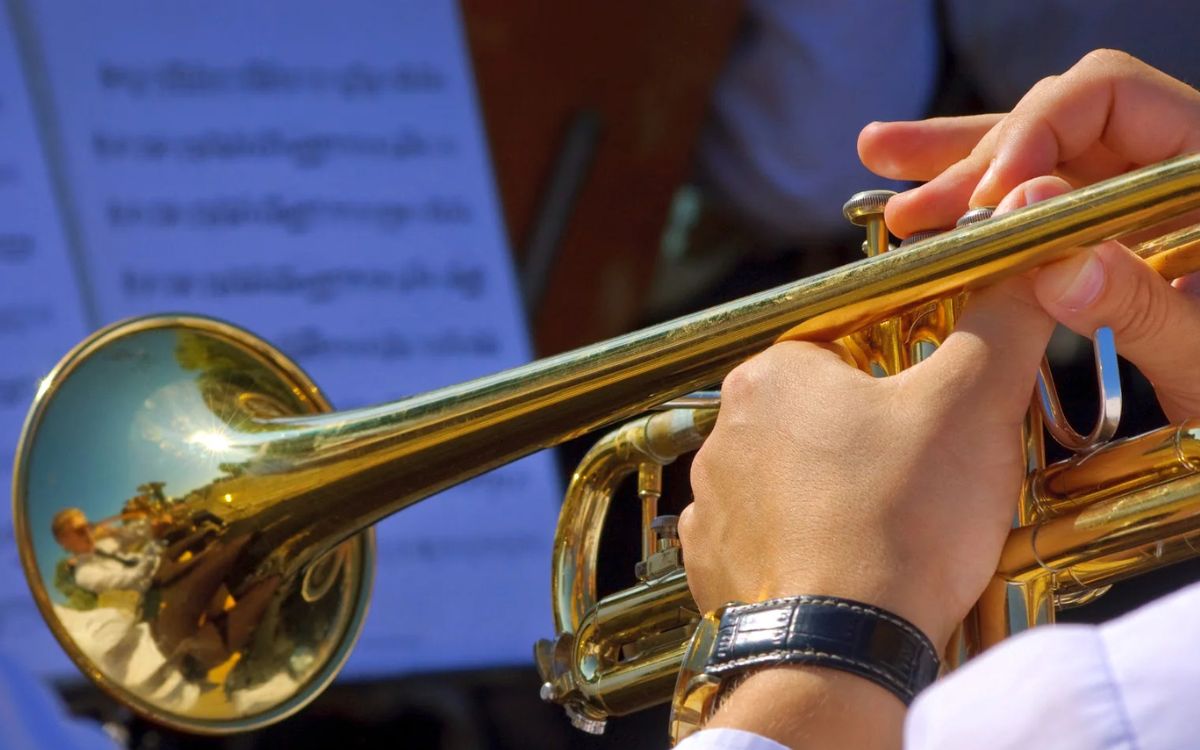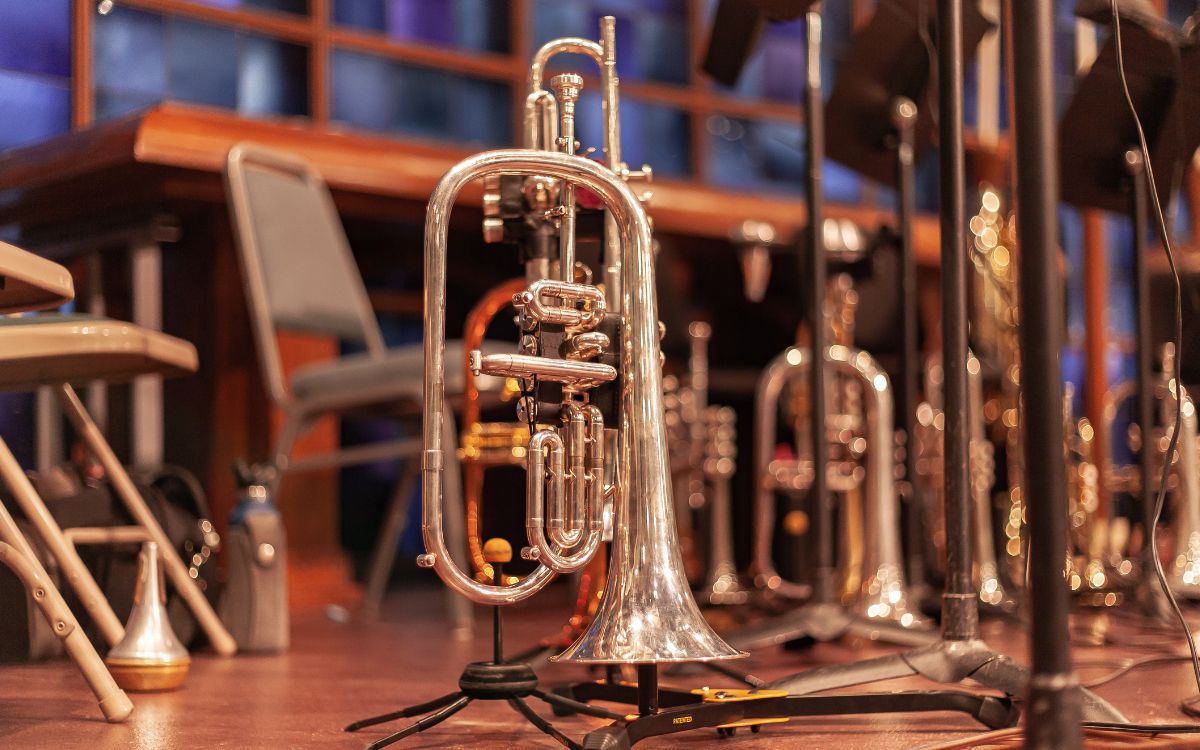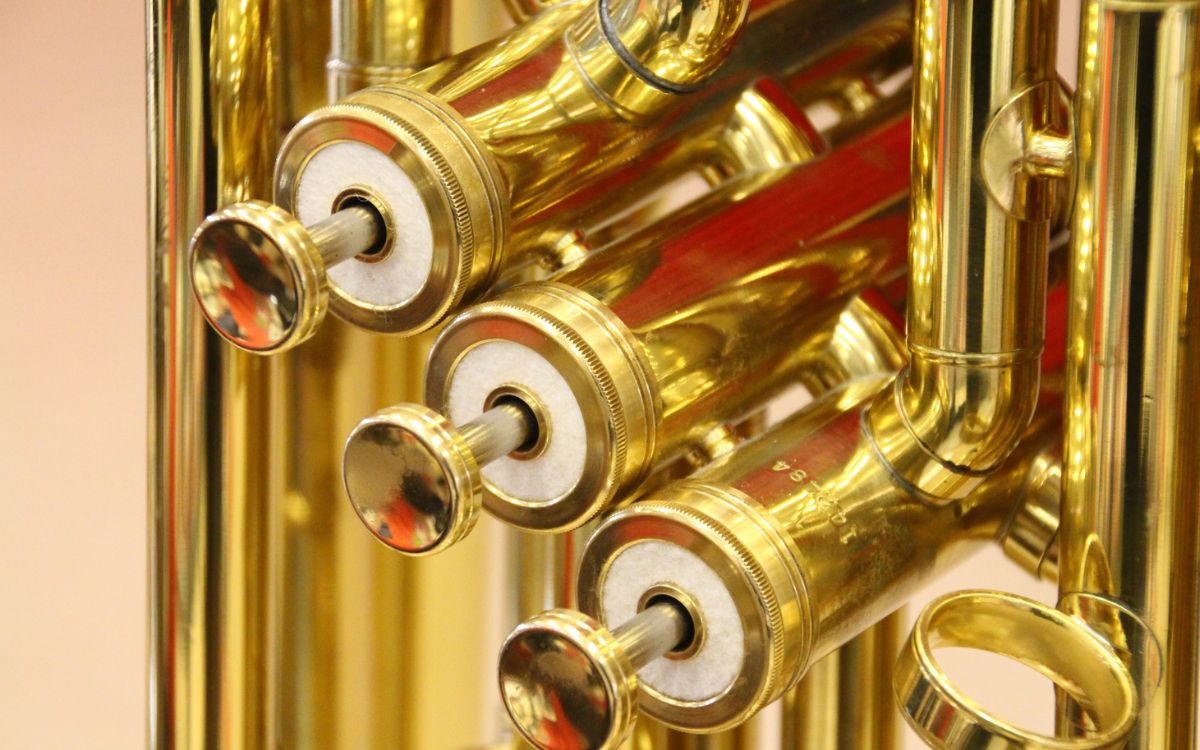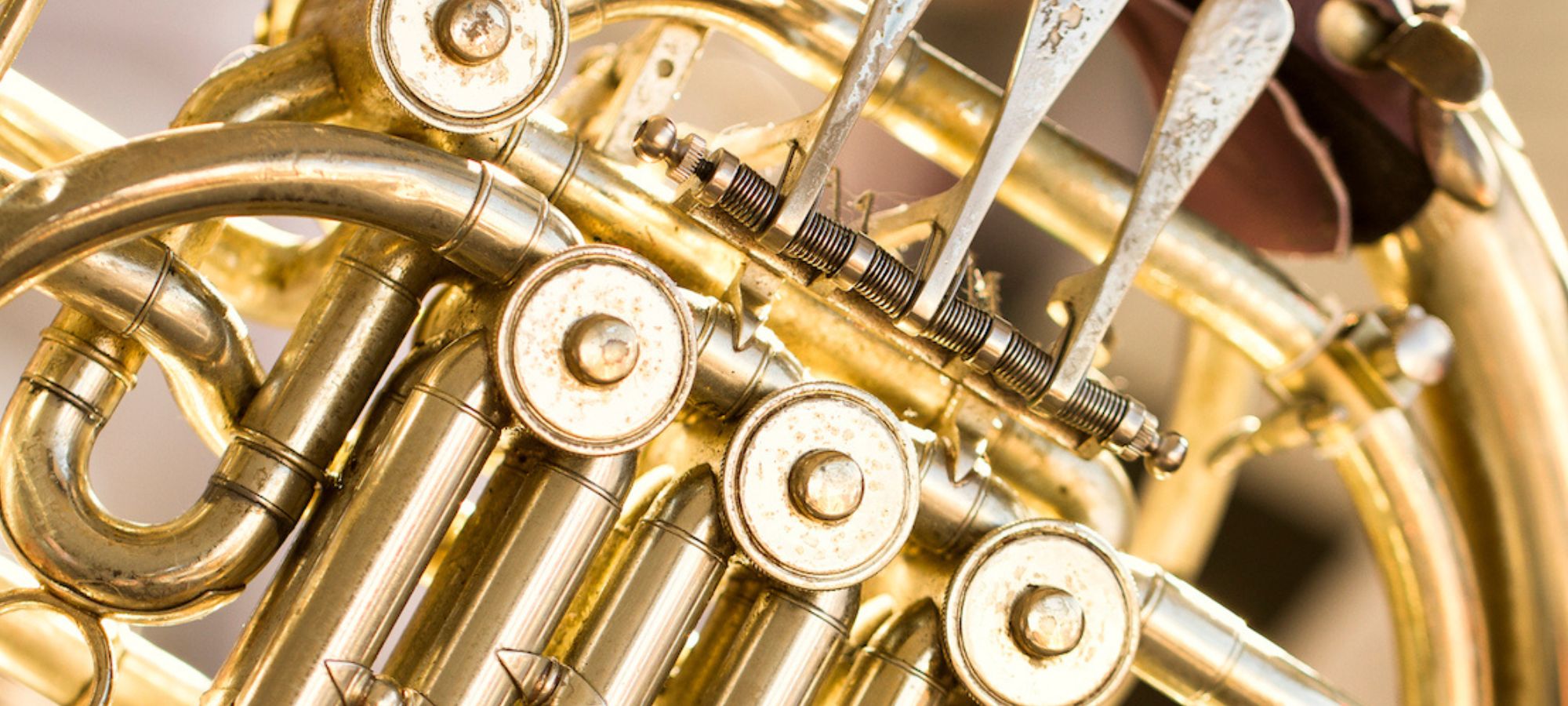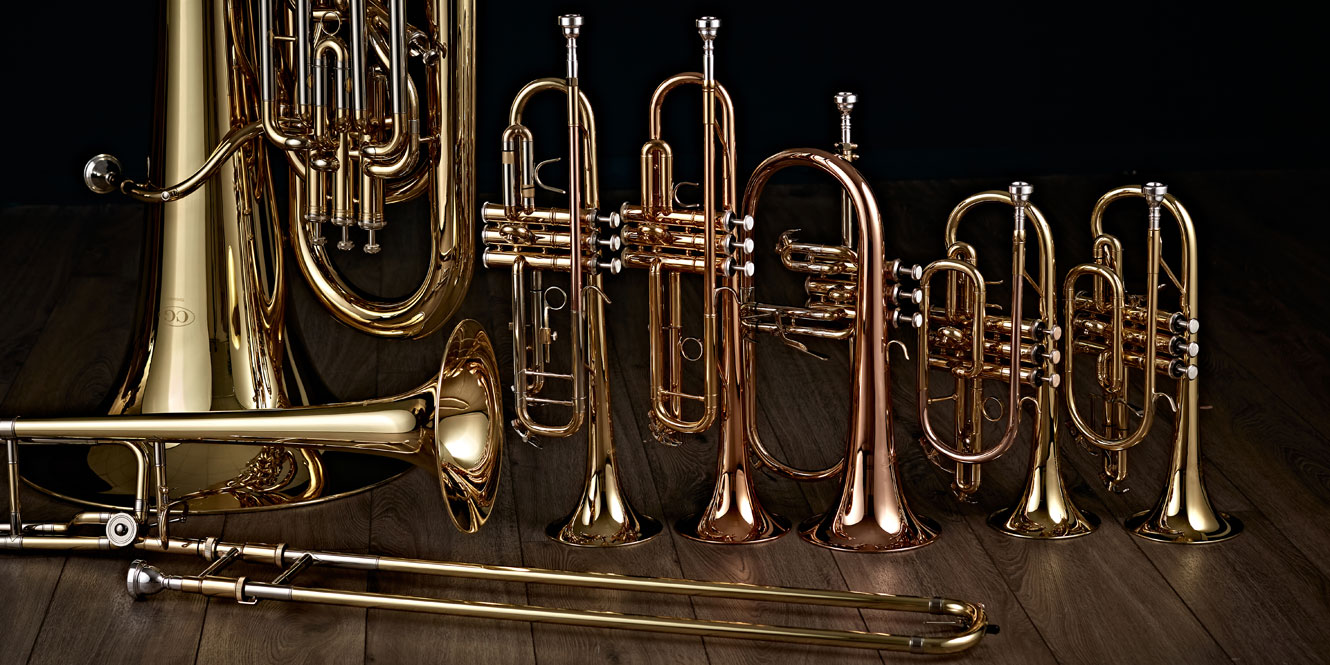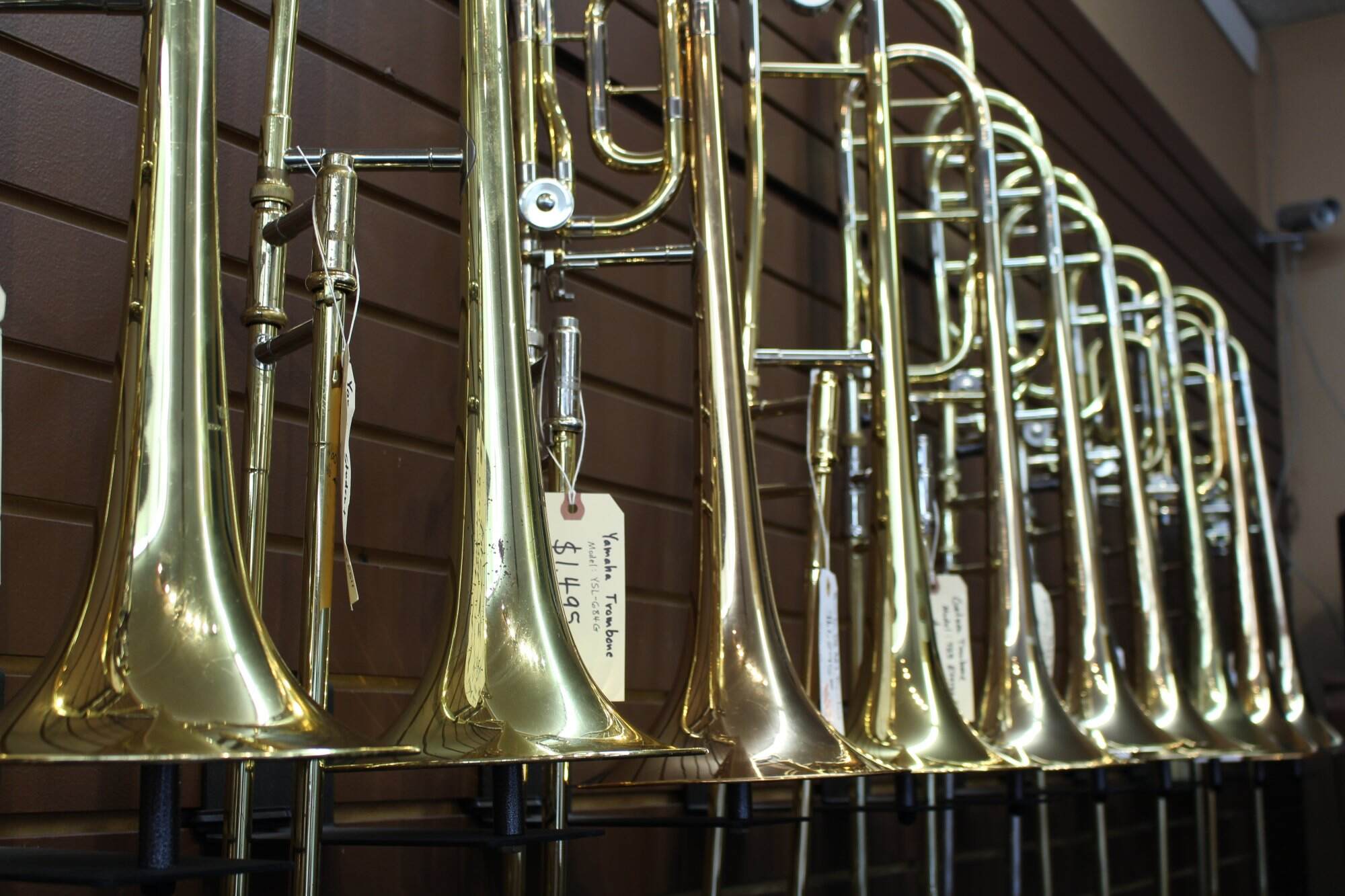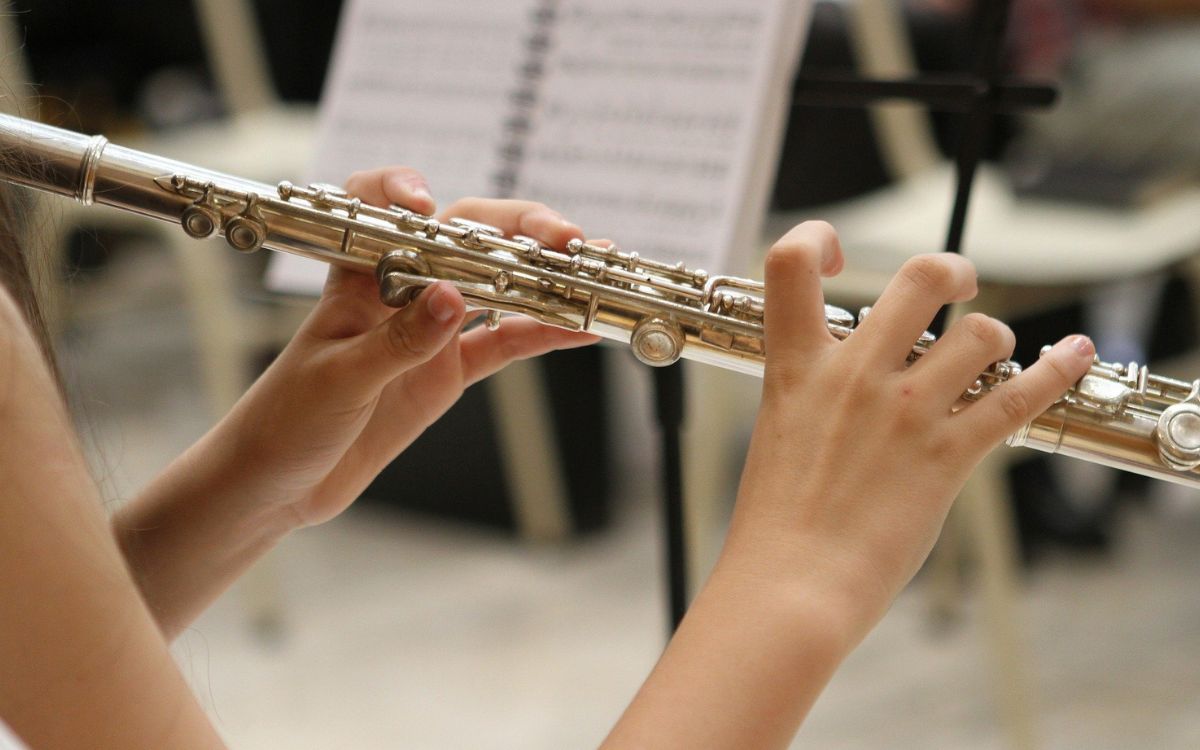Home>Instruments>Brass Instruments>How Do Brass Instruments Produce Their Sound


Brass Instruments
How Do Brass Instruments Produce Their Sound
Published: January 15, 2024
Discover how brass instruments create their unique sound. From trumpets to tubas, explore the mechanics and science behind these beautiful instruments.
(Many of the links in this article redirect to a specific reviewed product. Your purchase of these products through affiliate links helps to generate commission for AudioLover.com, at no extra cost. Learn more)
Table of Contents
Introduction
Brass instruments have a rich and vibrant history, dating back hundreds of years. From the majestic sound of a trumpet to the deep resonance of a tuba, these instruments have captured the hearts of musicians and audiences alike. But have you ever wondered how brass instruments produce their unique and captivating sound?
At their core, brass instruments are essentially long metal tubes that are coiled or straightened to form different shapes. When air is blown into these tubes, it causes the metal walls to vibrate, producing sound. However, there are several factors that influence the tone and quality of the sound produced, including the anatomy of the instrument, the role of the mouthpiece, the vibrating air column, and the influence of valves.
In this article, we will delve into the fascinating world of brass instruments and explore the mechanisms behind their sound production. We will take a closer look at the anatomy of brass instruments, the importance of the mouthpiece in shaping the sound, and the role of the vibrating air column. Additionally, we will examine the influence of valves in certain brass instruments.
Furthermore, we will discuss the different types of brass instruments, including trumpets, trombones, French horns, and tubas. Each of these instruments has its own unique characteristics and sound production methods, making them integral parts of various musical genres.
So, whether you are a music enthusiast, a budding musician, or simply curious about how brass instruments work, join us on this fascinating journey to uncover the secrets behind the captivating sound of brass instruments.
Anatomy of Brass Instruments
Understanding the anatomy of brass instruments is crucial in comprehending how they produce their distinct sound. While the specific design and structure may vary among different brass instruments, they all share some fundamental elements.
The main body of a brass instrument is typically made of brass or another metal alloy. The design of the instrument includes a lead pipe, a series of bends and curves, and a bell. These elements contribute to the instrument’s overall shape and play a crucial role in the sound production process.
The lead pipe is a small section of tubing that connects the mouthpiece to the main body of the instrument. It acts as a transition point, allowing the airflow to enter the instrument smoothly. The length and diameter of the lead pipe can vary, affecting the instrument’s response and tone.
The tubing of a brass instrument is strategically coiled or straightened to achieve the desired shape. This tubing serves as a pathway for the vibrating air column, which produces sound. The length and diameter of the tubing play a significant role in determining the instrument’s pitch and resonance.
At the end of the instrument, you’ll find the bell, which is flared outward. The bell acts as a resonator, amplifying the sound produced by the vibrating air column. The size and shape of the bell can profoundly impact the instrument’s sound projection and timbre.
In addition to the basic components mentioned above, some brass instruments may have additional features. For example, valves on instruments like trumpets and French horns enable the player to change the length of the vibrating air column by redirecting the airflow. This allows for different pitches to be produced.
Overall, the careful design and construction of the various elements in a brass instrument work harmoniously to create a vibrant and resonant sound. The precise combination of tubing, lead pipe, and bell shape, along with other features, gives each instrument its unique voice and character.
Now that we have examined the general anatomy of brass instruments, let’s explore the role of the mouthpiece in producing the distinctive sound.
The Role of the Mouthpiece
The mouthpiece of a brass instrument is a crucial component that directly impacts the sound production and playability. It is the point where the musician’s lips make contact with the instrument, allowing them to create vibrations and manipulate the airflow.
Typically made of brass or another metal alloy, a mouthpiece consists of a cup, a rim, a throat, and a backbore. Each part plays a specific role in shaping the sound and providing comfort for the player.
The cup of the mouthpiece is the rounded portion that receives the player’s lips. Its shape, depth, and diameter greatly influence the instrument’s sound quality. A deeper cup produces a more mellow and rich tone, while a shallower cup creates a brighter and more focused sound.
The rim, located at the outer edge of the mouthpiece, provides stability and comfort for the player’s embouchure (the way the lips are positioned). It is important for the rim to have a suitable thickness and contour to ensure a proper seal and facilitate control over the instrument’s response.
The throat is the narrow passageway between the cup and the backbore. It affects the speed and direction of the airflow, contributing to the instrument’s overall timbre and projection. A larger throat diameter can lead to a freer and more resonant sound, while a smaller throat diameter offers more control and focus.
The backbore refers to the chamber behind the throat, leading to the instrument’s tubing. It serves to further shape and amplify the sound produced by the vibrating air column. Different backbore designs can influence the instrument’s resistance, response, and overall sound characteristics.
The mouthpiece plays a critical role in determining the instrument’s intonation and playability as well. The size and shape of the cup and throat, in particular, affect how easily the player can produce specific notes and maintain pitch accuracy.
It’s worth noting that different brass instruments have different mouthpiece specifications. For example, the mouthpiece of a trumpet tends to have a smaller cup size and throat diameter compared to that of a tuba. These variations accommodate the differences in instrument size, register range, and required playing techniques.
Ultimately, the mouthpiece is where the musical expression begins. The player’s embouchure, combined with the unique characteristics of the mouthpiece, forms the foundation for sound production on a brass instrument. It is a vital tool for creating a wide range of tonal colors and expressive capabilities.
Now that we have explored the role of the mouthpiece, let’s move on to understanding the vibrating air column and its significance in brass instrument sound production.
The Vibrating Air Column
The vibrating air column is a fundamental aspect of brass instrument sound production. When a musician blows air into the instrument’s mouthpiece, it travels through the instrument’s tubing, causing the air column inside to vibrate and produce sound.
When the player’s lips are buzzed against the mouthpiece, they create a disturbance in the airflow. This disturbance sets the air molecules inside the instrument in motion, causing them to vibrate back and forth. These vibrations then travel through the length of the tubing, resulting in the creation of musical notes.
The length of the vibrating air column plays a crucial role in determining the pitch of the produced sound. Shortening the length of the air column by pressing down valves or adjusting slides raises the pitch, while lengthening the air column lowers the pitch.
As the air column vibrates, specific harmonics or overtones are produced, creating a series of frequencies that blend together to form the instrument’s unique timbre. The shape and size of the instrument’s tubing influence the harmonics produced, resulting in variations in sound quality among different brass instruments.
It’s also important to note that the speed and intensity of the player’s airflow can affect the vibration of the air column. A faster airstream can generate higher frequencies, resulting in a brighter and more penetrating sound. Conversely, a slower airstream can produce lower frequencies, yielding a mellower and warmer tone.
The vibrating air column relies on the resonance phenomenon to enhance the sound produced by the instrument. When the frequency of the vibrating air column matches the natural frequency of the instrument, resonance occurs. This resonance amplifies the sound, making it more robust and projecting it further.
When playing a brass instrument, the musician manipulates the air column by adjusting their embouchure, controlling the airflow, and utilizing various playing techniques. These techniques allow for expression, dynamics, and the ability to play a wide range of musical styles.
The vibrating air column is a fundamental principle in brass instrument sound production. Understanding how it interacts with the instrument’s tubing and the player’s technique is essential in harnessing the full potential of these magnificent instruments.
Now that we have explored the vibrating air column, let’s move on to understanding the influence of valves in certain brass instruments.
The Influence of Valves
Valves play a significant role in certain brass instruments, such as trumpets, French horns, and euphoniums. They allow the musician to change the length of the vibrating air column, making it possible to play a wider range of notes and achieve greater flexibility in musical performance.
Most brass instruments that use valves utilize a type known as piston valves. These valves are typically made of brass and consist of cylindrical pistons that fit into valve casings attached to the instrument’s tubing.
When the valve is in its resting position, the air column passes through the main tubing unhindered. However, when the valve is pressed down, the piston moves up, diverting the airflow into an additional length of tubing. This added length creates a longer vibrating air column, resulting in a lower pitch.
By combining valves in different combinations and partially depressing them, musicians can manipulate the length of the vibrating air column to produce various notes within a single harmonic series. This allows for greater agility and versatility when playing melodies and executing technical passages.
The arrangement of valves can vary among different instruments. For instance, trumpets and cornets typically have three piston valves, while the French horn usually has four. Each valve combination provides different pitch and key options, expanding the range and possibilities of the instrument.
While valves offer tremendous benefits in terms of pitch manipulation, they can also introduce some challenges. The additional tubing created by the valves affects the overall resistance of the instrument, which can impact the musician’s ability to play certain notes or execute rapid passages smoothly.
Mastering valve technique requires precise coordination between the fingers and the embouchure. It also involves understanding the specific tendencies and quirks of each valve combination in terms of intonation and response.
Despite these challenges, valves have revolutionized brass instrument playing, allowing for greater musical expression and technical capabilities. Without valves, the range and versatility of brass instruments would be significantly limited.
Now that we have discussed the influence of valves, let’s explore the different types of brass instruments and their unique sound production methods.
Different Types of Brass Instruments
Brass instruments come in various shapes and sizes, each with its own unique sound production methods and characteristics. Let’s take a closer look at some of the most prominent types of brass instruments:
- Trumpets: Trumpets are known for their bright and piercing sound. They have a cylindrical bore and typically three piston valves. The player produces sound by buzzing their lips into a small cup-shaped mouthpiece, which sets the air column in motion.
- Trombones: Trombones have a distinctive slide mechanism rather than valves. By extending or retracting the slide, the player changes the length of the vibrating air column, producing different pitches. Trombones can have various bore sizes, resulting in different timbres and tonal qualities.
- French Horns: French horns are renowned for their rich, warm, and mellow sound. They have a conical bore and are equipped with rotary valves. The player places their hand inside the bell to manipulate the tone and pitch colors, adding an additional level of expressiveness.
- Tubas: Tubas are the largest and lowest-pitched brass instruments. They have a wide bell and a large cup-shaped mouthpiece. Tubas can have various configurations, including front-facing or sousaphone-style, but all produce a powerful and resonant sound with a strong bass foundation.
These are just a few examples of the diverse range of brass instruments. Each type carries its own distinct sound and is used in various musical genres, including classical, jazz, marching bands, and more.
Although the basic principles of sound production remain the same across brass instruments, such as buzzing the lips into a mouthpiece, the unique characteristics of each instrument contribute to their individuality.
It’s fascinating to explore the different types of brass instruments and appreciate the beauty and versatility that they bring to the world of music. Let’s now dive into the specific sound production methods for each of these instruments.
Sound Production in Trumpets
Trumpets are brass instruments renowned for their brilliant and piercing sound. They consist of a cylindrical tube with a flared bell at the end and are typically equipped with three piston valves. Understanding the sound production process in trumpets can shed light on the instrument’s unique tonal qualities.
Sound production in trumpets begins with the player buzzing their lips into the mouthpiece. The buzzing lips create vibrations that travel through the mouthpiece and into the trumpet’s tubing. The vibrations set the air column inside the instrument in motion, producing sound waves.
The length of the vibrating air column determines the pitch of the sound produced by the trumpet. By pressing down and releasing the piston valves, the player alters the length of the air column, allowing them to play different notes within the harmonic series.
The valve combination used in trumpets provides specific pitches and key options. By depressing different valve combinations, players can access additional lengths of tubing and create diverse ranges of notes, enabling them to play melodies and execute technical passages with precision.
The cylindrical shape of the trumpet’s tubing contributes to its distinct sound characteristics. The cylindrical bore creates a bright and focused sound, emphasizing the higher harmonics. This gives the trumpet its characteristic brilliance and allows it to cut through ensembles and be heard over other instruments.
The mouthpiece also plays a significant role in sound production. Trumpet mouthpieces typically have a medium-sized cup and a relatively narrow rim, allowing for precise control and flexibility in sound production. Different mouthpiece designs can influence the overall tone, projection, and response of the instrument.
Furthermore, the player’s embouchure, breath control, and techniques such as tonguing and vibrato contribute to the expressive capabilities of the trumpet. These factors allow trumpet players to create a wide range of tonal colors and dynamics, making the instrument versatile in various music genres including classical, jazz, and popular music.
Mastering the trumpet requires dedicated practice and a deep understanding of both the technical and musical aspects of the instrument. The combination of precise valve technique, embouchure control, and musical interpretation allows trumpet players to harness the instrument’s inherent beauty and power.
Now that we have explored sound production in trumpets, let’s move on to understanding the sound production process in trombones.
Sound Production in Trombones
Trombones are brass instruments known for their distinct slide mechanism and versatile sound. Understanding how sound is produced in trombones can shed light on the instrument’s unique tonal qualities and range.
The sound production in trombones starts with the player buzzing their lips into the mouthpiece, just like other brass instruments. However, what sets trombones apart is the absence of valves. Instead, they rely on a sliding mechanism called the slide to change the length of the vibrating air column.
By extending or retracting the slide, the player alters the length of the air column, creating different pitches. This feature gives trombones unparalleled flexibility in terms of playing chromatic intervals and executing glissandos, where the player smoothly slides between notes.
The cylindrical tubing of the trombone is another key factor in sound production. The size of the bore, or the internal diameter of the tubing, affects the instrument’s timbre and response. Trombones can have various bore sizes ranging from small (tenor) to larger (bass) sizes, each producing a unique sound.
The larger bore sizes of bass trombones, for example, contribute to a broader and more resonant sound with a lower fundamental pitch. On the other hand, smaller bore sizes in tenor trombones offer a brighter and focused sound, allowing for greater agility and maneuverability.
The slide itself plays a crucial role in sound production and timbre control. By varying the length of the slide, the musician can adjust the harmonic series produced by the trombone, creating different partials and overtones. This flexibility allows for expressive playing and the ability to blend with various musical ensembles.
The player’s embouchure and breath control also play significant roles in sound production on the trombone. The embouchure, or the way the lips are set against the mouthpiece, influences the timbre, dynamics, and intonation. Proper breath support ensures a steady stream of air, providing the foundation for a resonant and expressive sound.
With its unique sliding mechanism, the trombone offers a wide range of musical possibilities. Whether playing soulful melodies in orchestral settings, energetic jazz solos, or adding color to a brass ensemble, the trombone’s sound production intricacies and versatile nature make it a treasured instrument.
Now that we have explored sound production in trombones, let’s move on to understanding the sound production process in French horns.
Sound Production in French Horns
French horns, often regarded for their rich and mellow sound, have a unique sound production process that sets them apart from other brass instruments. Understanding how sound is produced in French horns can shed light on their distinctive tonal qualities.
The sound production in French horns begins with the player buzzing their lips into the small, cup-shaped mouthpiece. From there, the air column travels through the instrument’s tubing, which is coiled tightly into a circular shape. The specific shape and length of the tubing contribute to the distinct sound of the French horn.
What sets French horns apart is their use of rotary valves. These valves are complex mechanisms that, when engaged, redirect the airflow through different lengths of tubing, altering the pitch produced. By pressing down various valve combinations, players can access additional tubing lengths, allowing for a wider range of notes.
Another unique aspect of French horn sound production is the presence of a hand in the bell of the instrument. This technique, known as hand-stopping or hand-stopping, involves inserting the hand inside the bell to partially obstruct the opening. By doing so, the player can manipulate the pitch, tone color, and quality of the sound, adding a level of expressiveness and versatility.
The bell of the French horn plays a crucial role in sound production as well. It acts as a resonator, amplifying and shaping the sound. The flare of the bell contributes to the instrument’s warm and blending qualities, allowing it to blend well with other instruments in an ensemble setting.
French horn players also rely on their embouchure, breath control, and technique to produce the desired sound. The embouchure, in particular, plays a vital role in controlling dynamics, intonation, and overall tone quality. Proper breath control ensures a steady, full sound and allows for the production of a wide dynamic range.
French horns possess a wide range of musical capabilities, from lyrical melodies to majestic fanfares. Their unique sound production methods, including the use of rotary valves and hand-stopping, provide players with immense control and the ability to convey a wide range of emotions through their playing.
With their rich tonal palette and ability to evoke a sense of elegance and depth, French horns are truly remarkable instruments. They are highly valued in orchestras, chamber ensembles, and various musical genres for their expressive and distinctive sound.
Now that we have explored sound production in French horns, let’s move on to understanding the sound production process in tubas.
Sound Production in Tubas
Tubas, known for their powerful and resonant sound, have a unique sound production process that sets them apart from other brass instruments. Understanding how sound is produced in tubas can help us appreciate their distinct tonal characteristics.
Sound production in tubas begins with the player buzzing their lips into the large cup-shaped mouthpiece. The buzzing creates vibrations that travel through the mouthpiece and into the tuba’s wide tubing. The size and shape of the tubing contribute to the tuba’s deep and rich sound.
Tubas often have a conical bore, meaning that the tubing gradually widens as it extends towards the bell. This conical shape allows for a smoother and more expansive sound production, giving the tuba its characteristic warmth and breadth of tone.
The vibrating air column inside the tuba is affected by the length and shape of the tubing. By pressing the instrument’s valves or utilizing rotary valves (depending on the type of tuba), the player can alter the length of the vibrating air column, thus changing the pitch produced.
Similar to other brass instruments, the player’s embouchure and breath control play a crucial role in sound production on the tuba. The embouchure, or the way the lips are positioned on the mouthpiece, affects the sound’s quality, range, and stability. Proper breath support allows for a consistent and resonant sound.
Tubas have a wide bell at the end of the instrument, which acts as a resonator and amplifies the sound produced by the vibrating air column. The size and shape of the bell contribute to the tuba’s projection and overall timbre.
Due to its large size, the tuba’s sound can be powerful and commanding. It provides a strong foundation in ensembles, such as in brass bands, symphony orchestras, and marching bands, serving as the backbone of the low brass section.
The versatile nature of tubas allows them to perform a range of musical styles, from the majestic and grandiose to the expressive and lyrical. Whether providing the bassline in an orchestral composition or taking the lead in a solo performance, the tuba’s sound production capabilities make it an essential instrument in many musical settings.
Now that we have explored sound production in tubas, let’s conclude our journey through the world of brass instruments.
Conclusion
Brass instruments are fascinating instruments that produce a wide range of captivating sounds. Through their unique sound production methods, these instruments have shaped the world of music for centuries.
From the bright and piercing sound of trumpets to the warm and resonant tones of French horns and the powerful depth of tubas, each brass instrument has its own distinct identity. The anatomy of these instruments, including the intricate design of the tubing, the role of the mouthpiece, and the influence of valves, contributes to the production of their unique sound.
Understanding the vibrating air column, where the player’s embouchure and the buzzing of the lips create vibrations, provides insights into the sound production process. The manipulation of the length of the vibrating air column, whether through valves or sliding mechanisms, allows for an expansive range of notes and expressive possibilities.
By exploring the different types of brass instruments, including trumpets, trombones, French horns, and tubas, we can appreciate the diversity of sounds and playing techniques within the brass family. These instruments have found their place in various musical genres, enriching orchestras, brass bands, jazz ensembles, and more.
Mastering a brass instrument requires technical proficiency, embouchure control, breath support, and a deep understanding of musical expression. The skillful combination of these elements empowers musicians to bring out the instrument’s full potential and create captivating performances.
As we conclude our exploration of brass instrument sound production, we hope that you have gained a deeper appreciation for the artistry and craftsmanship behind these remarkable instruments. Whether you’re a musician, a music enthusiast, or simply curious about the world of brass instruments, let the captivating sounds and the stories they tell continue to inspire and resonate with you.


